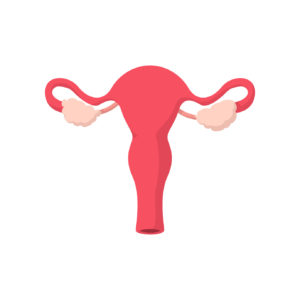A hysterectomy means surgical removal of the uterus. Other parts that may or may not be removed at the same time include:
- Ovaries
- Cervix
- Fallopian Tubes
Depending on the reason for the surgery and the technique being used to remove the uterus, one or all of the above may also come out with the uterus.
There are a number of different reasons for having your uterus removed. These can include heavy periods, fibroids, cancer, abnormal cells, and pain. Many people will report that they have a strong family history of needing to have a hysterectomy. This is quite a common history to have, because years ago we did not have many other options for managing things like heavy bleeding or fibroids and so the only option was a hysterectomy. Currently we are very lucky to have many options for managing most of these problems, and in general we recommend starting with less invasive options and saving surgery as the last resort. The reason for this is that surgery is not without risks. A hysterectomy is a major surgery and carries with it risks of complications and varying times to recover. For some problems, like cancer, surgery is usually the best option, and for some people the other less invasive options have failed and in that case surgery is very reasonable.
A hysterectomy can be completed in a number of ways. The most common ways are:
- Abdominally (with an incision on the abdomen – either ‘bikini line’ or up-and-down)
- Vaginally
- Laparoscopically (with tiny incisions on the abdomen and the use of a camera)
At Brockville General Hospital, the vast majority of our hysterectomies are done laparoscopically. When done this way pain is significantly less afterwards and most people go home the very next day. Recovery is also usually faster. This type of surgery usually takes about 2-3 hours. Most people take about 4 weeks to recover from this kind of surgery, but some people feel better sooner, and some people will take longer.
There are risks involved with having any surgery. Bleeding and infection are risks that are common to every surgery. When we operate on the uterus, we are close to many important structures. The bladder sits right in front of your uterus. The bowels surround your uterus. The ureters which connect your kidneys to your bladder run in close proximity. There are major blood vessels very close by. It is possible, no matter how good a surgeon you have, for these structures to be damaged during surgery on the uterus. This happens rarely, but if it does happen further surgery can be needed, you could need to keep a catheter in your bladder for a few weeks, or you could get quite sick. It is also possible, although exceedingly unlikely, to die during surgery. This is why no one should take surgery lightly!
Certain things may make your particular surgery more risky than average. Surgery becomes much more difficult when you are heavier, and is generally much easier if you are closer to your ideal body weight. If you have had previous surgery on your abdomen or pelvis this can create scar tissue which may make your surgery more difficult and more prone to complication. A history of infection, inflammation, or endometriosis can also make surgery more difficult. Previous c-sections can make a hysterectomy more difficult. C-sections create scar tissue between the bladder and the uterus which needs to be separated in order to remove the uterus. Having scar tissue here makes a bladder injury more likely. These are all things to consider before deciding to proceed with surgery, and will be discussed with you if that seems to be the right treatment for you.
